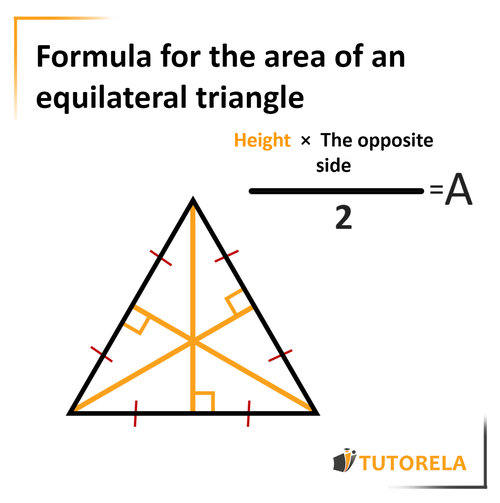Formula to calculate the area of an equilateral triangle:

Master calculating equilateral triangle area with step-by-step practice problems. Learn to use height, median, and bisector properties in triangle geometry.
Formula to calculate the area of an equilateral triangle:

Calculate the area of the triangle below, if possible.
Calculate the area of the right triangle below:
Due to the fact that AB is perpendicular to BC and forms a 90-degree angle,
it can be argued that AB is the height of the triangle.
Hence we can calculate the area as follows:
Answer:
24 cm²
Calculate the area of the triangle ABC using the data in the figure.
First, let's remember the formula for the area of a triangle:
(the side * the height that descends to the side) /2
In the question, we have three pieces of data, but one of them is redundant!
We only have one height, the line that forms a 90-degree angle - AD,
The side to which the height descends is CB,
Therefore, we can use them in our calculation:
Answer:
36 cm²
Calculate the area of the following triangle:
The formula for calculating the area of a triangle is:
(the side * the height from the side down to the base) /2
That is:
We insert the existing data as shown below:
Answer:
10
Calculate the area of the following triangle:
The formula for the area of a triangle is
Let's insert the available data into the formula:
(7*6)/2 =
42/2 =
21
Answer:
21
Calculate the area of the triangle below, if possible.
The formula to calculate the area of a triangle is:
(side * height corresponding to the side) / 2
Note that in the triangle provided to us, we have the length of the side but not the height.
That is, we do not have enough data to perform the calculation.
Answer:
Cannot be calculated